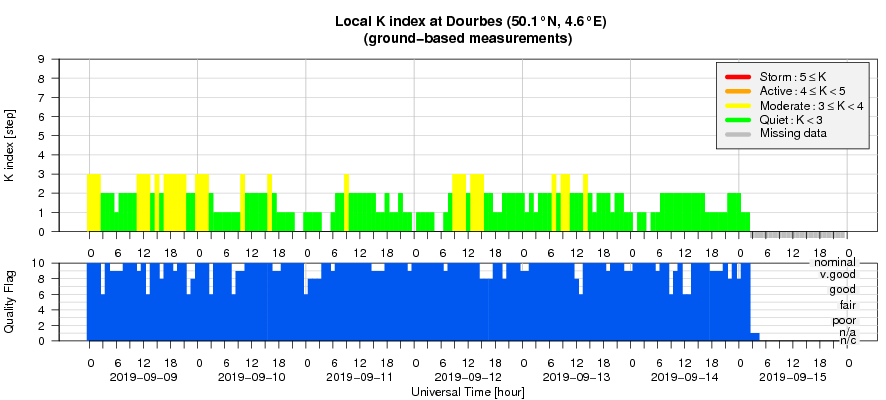- Table of Content
- 1.A new Topical ...
- 2.EUI is being c...
- 3.ESWW2019 - We ...
- 4.Review of sola...
- 5.PROBA2 Observa...
- 6.The Internatio...
- 7.Geomagnetic Ob...
- 8.The SIDC space...
- 9.Review of iono...
2. EUI is being commissioned
3. ESWW2019 - We have a winner!
4. Review of solar and geomagnetic activity
5. PROBA2 Observations (9 Sep 2019 - 15 Sep 2019)
6. The International Sunspot Number by SILSO
7. Geomagnetic Observations at Dourbes (9 Sep 2019 - 15 Sep 2019)
8. The SIDC space weather Briefing
9. Review of ionospheric activity (9 Sep 2019 - 15 Sep 2019)
A new Topical Issue for the SWSC Journal
The Journal of Space Weather and Space Climate (JSWSC - https://www.swsc-journal.org/news ) has opened a new Topical Issue entitled "Space climate: The past and future of solar activity", as listed underneath. This is an open call for papers discussing any aspect of Space Climate, i.e., the long-term change in the Sun and its effects in the heliosphere and the near-Earth space environment, including solar effects on the atmosphere and climate. This Topical Issue is partly based on the program of the "Space Climate-7" organized in Orford, Canada, in July 2019. However, it is open to all contributors and not limited to Space Climate-7 participants only.
Questions regarding this topical issue are to be addressed to the topical editor-in-chief Kalevi Mursula (University of Oulu, Finland). For questions concerning the submission process, please contact the Editorial Office (jswsc@edpsciences.org). Manuscripts have to be submitted in PDF format via the JSWSC online submission tool before the 31 January 2020 deadline. If you need additional time to complete your submission, please do not hesitate to contact the JSWSC Editorial Office.
Topical Issue: Space climate: The past and future of solar activity
Scope and guidelines: https://www.swsc-journal.org/news/297
The Topical Editor-in-Chief is Kalevi Mursula (Kalevi.Mursula@oulu.fi )
Deadline for submission: 31 January 2020
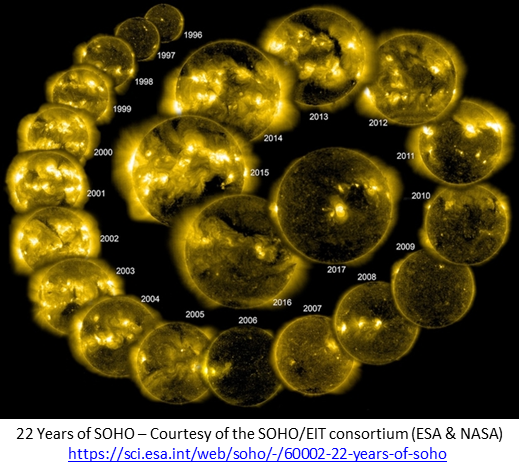
EUI is being commissioned
EUI, the extreme ultraviolet imagers is in its commissioning phase. The 'builders' of the telescope do an handover of the responsibility of the telescope to the 'users'. The 'builders' have to show that the telescope is launch-proof and will be in a perfect state to do what it should do: make pictures in high resolution of the Sun once it is in space.
All this was discussed at the EUI workshop at STCE, Brussels.
On September 17, the EUI telescope has made its first steps on twitter:

On its way to become a social media celebrity!
ESWW2019 - We have a winner!
Since 2006, ESWW has each year a theme picture. The ESWW2013 dinner contest proved that many had artistic talents. So, we explored the talents and creativity of the participants further and came to the contest 'Design 4 a Ticket'.
This year, we received 19 (!) submissions. The jury of 7 members deliberated, discussed, argued, ... The competition was killing. Finally, after 6 days, the jury came to a verdict.
Kaufman Anastasiia is the winner of the 2019 poster contest
with
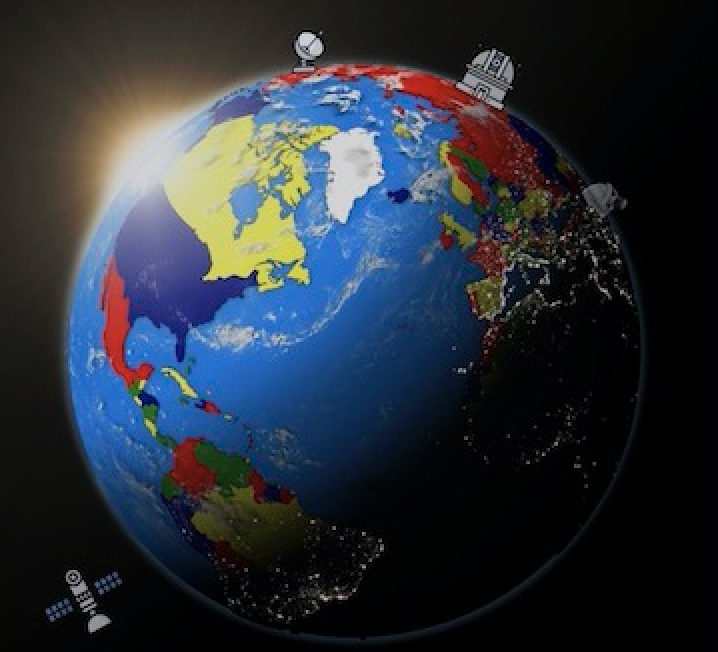
Since today, September 19, Anastasiia piece of art is used for the poster and banner: http://www.stce.be/esww2019/index.php
Speciali Roberto and Wood Alan landed on the honourable second and third place. Check http://www.stce.be/esww2019/postercontest.php to see their submission.
Review of solar and geomagnetic activity
Solar Activity
Solar activity was at very low level. The Sun was spotless and no flares were observed. There were no Earth directed coronal mass ejections (CME) and the proton flux remained at background levels.
Geomagnetic Activity
The solar wind was slightly enhanced near Earth (L1). The solar wind speed varied between approximately 380 and 550 km/s according to ACE. The magnetic field carried by the solar wind was predominantly directed away from the Sun (positive sector) and the Bz component ranged between -7 and +8 nT.
On September 8, the Bz-component was overall more negative, leading to active geomagnetic conditions at the planetary level.
PROBA2 Observations (9 Sep 2019 - 15 Sep 2019)
Solar Activity
Solar flare activity remained very low during the week.
In order to view the activity of this week in more detail, we suggest to go to the following website from which all the daily (normal and difference) movies can be accessed: http://proba2.oma.be/ssa
This page also lists the recorded flaring events.
A weekly overview movie can be found here (SWAP week 494): http://proba2.oma.be/swap/data/mpg/movies/weekly_movies/weekly_movie_2019_09_09.mp4
Details about some of this week's events can be found further below.
If any of the linked movies are unavailable they can be found in the P2SC movie repository here: http://proba2.oma.be/swap/data/mpg/movies/
Wednesday Sep 11
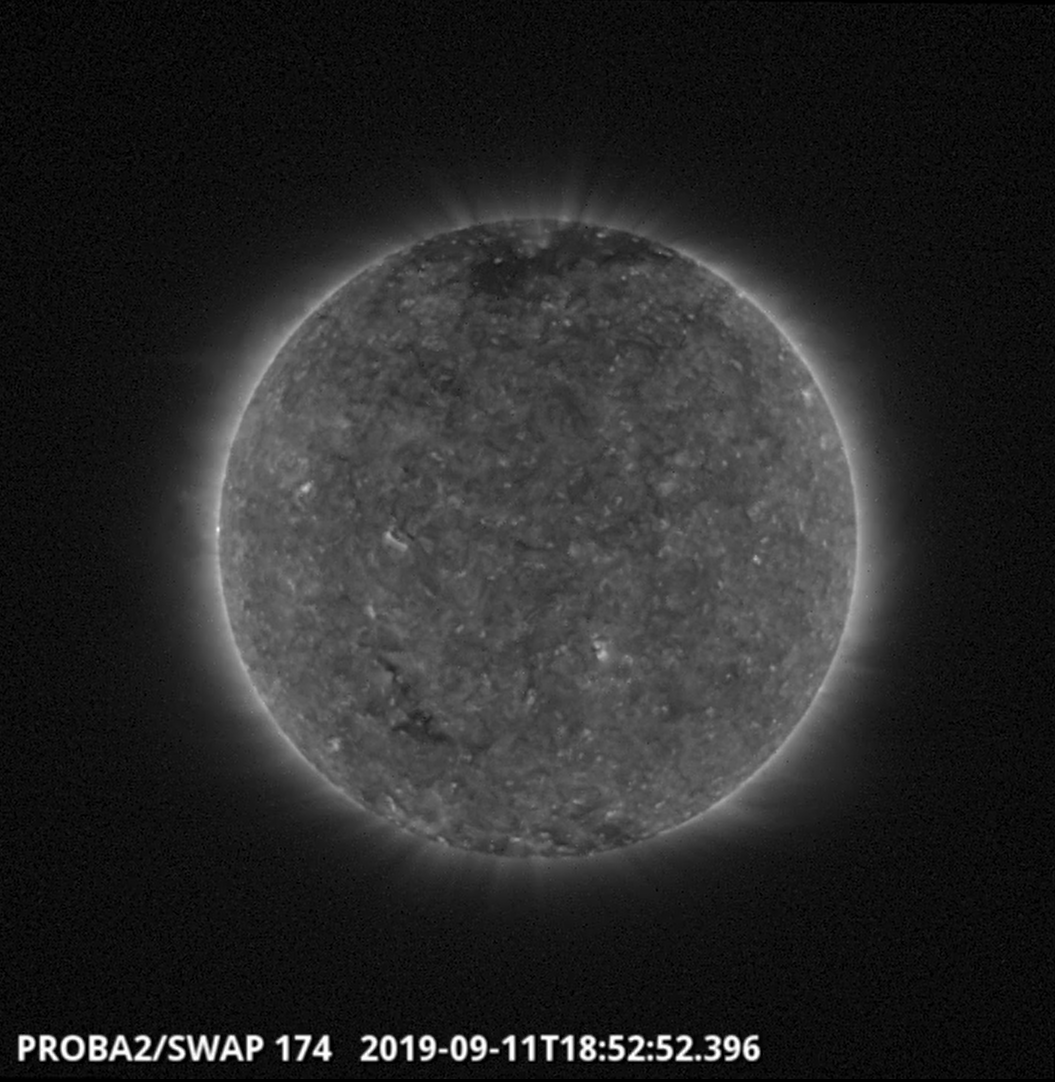
An eruption, originating from the backside of the Sun, was observed by SWAP on 2019-Sep-11 and is shown emerging over the east solar limb in the SWAP image above taken at 18:52 UT.
Find a movie showing the event more clearly here (SWAP difference movie): http://proba2.oma.be/swap/movies/20190911_swap_diff.mp4
The International Sunspot Number by SILSO
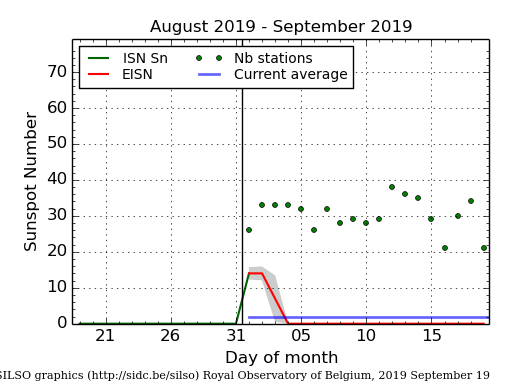
The daily Estimated International Sunspot Number (EISN, red curve with shaded error) derived by a simplified method from real-time data from the worldwide SILSO network. It extends the official Sunspot Number from the full processing of the preceding month (green line). The plot shows the last 30 days (about one solar rotation). The horizontal blue line shows the current monthly average, while the green dots give the number of stations included in the calculation of the EISN for each day.
The SIDC space weather Briefing
The Space Weather Briefing presented by the forecaster on duty from September 8 to 15. It reflects in images and graphs what is written in the Solar and Geomagnetic Activity report.
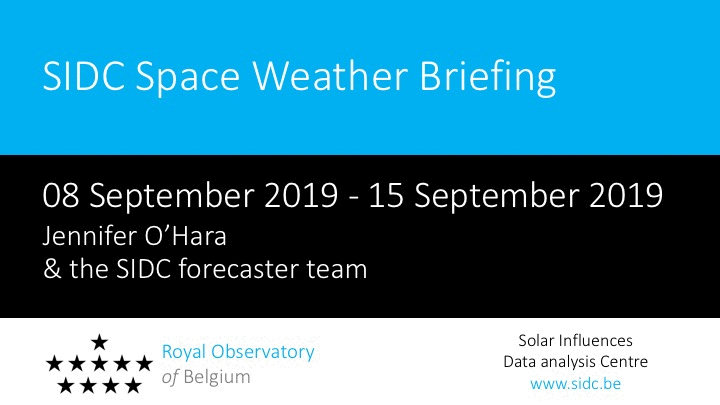
The pdf-version: http://www.stce.be/briefings/20190916_SWbriefing.pdf
The automatically running presentation: http://www.stce.be/briefings/20190916_SWbriefing.ppsm
Review of ionospheric activity (9 Sep 2019 - 15 Sep 2019)
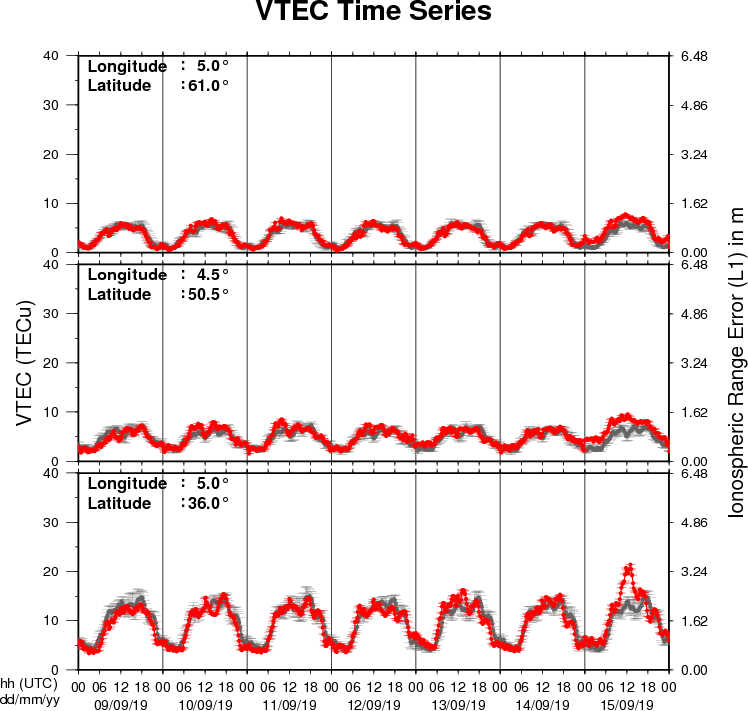
The figure shows the time evolution of the Vertical Total Electron Content (VTEC) (in red) during the last week at three locations:
a) in the northern part of Europe(N61°, 5°E)
b) above Brussels(N50.5°, 4.5°E)
c) in the southern part of Europe(N36°, 5°E)
This figure also shows (in grey) the normal ionospheric behaviour expected based on the median VTEC from the 15 previous days.
The VTEC is expressed in TECu (with TECu=10^16 electrons per square meter) and is directly related to the signal propagation delay due to the ionosphere (in figure: delay on GPS L1 frequency).
The Sun's radiation ionizes the Earth's upper atmosphere, the ionosphere, located from about 60km to 1000km above the Earth's surface.The ionization process in the ionosphere produces ions and free electrons. These electrons perturb the propagation of the GNSS (Global Navigation Satellite System) signals by inducing a so-called ionospheric delay.
See http://stce.be/newsletter/GNSS_final.pdf for some more explanations ; for detailed information, see http://gnss.be/ionosphere_tutorial.php
